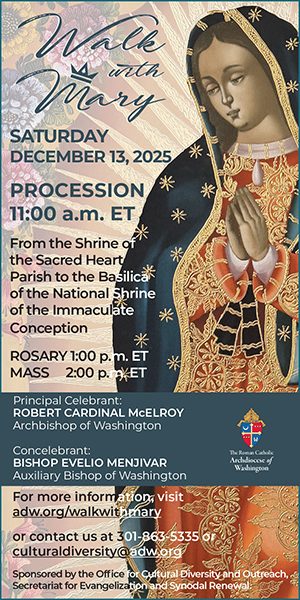“Faith is the realization of what is hoped for and evidence of things not seen.” - Hebrews 11:1
Black History Month is a special time to expand our knowledge and perspectives about events, people, and places in American History that are central to the story of the African American experience.
This year I have returned to the three attempts by the African American community of Selma, Alabama and civil rights activists in 1965 who attempted walks across the Edmund Pettus Bridge to the state capitol in Montgomery to protest the state’s voting registration restrictions designed to prevent its African American citizens from exercising their Constitutional right to vote. The images capturing their peaceful march from Selma to Montgomery were seared in my memory upon seeing newspapers and evening news broadcasts of the marches 60 years ago.
My family and I were horrified by the photographs and newsreels we saw of the first attempt by the marchers on Sunday, March 7, 1965, infamously known as “Bloody Sunday.” So called because of the stark brutality inflicted upon the marchers by the White law enforcement and deputized citizens waiting for their approach at the end of the bridge. Upon reaching that point, they were beaten with night sticks, teargassed, and trampled to the ground by the state troopers carrying shields and riding horses.
Accounts state that approximately 600 marchers would attempt that walk.
News of the march was everywhere. Rev. Dr. Martin Luther King, Jr. and other members of various civil rights organizations assisting with the march would reach out to clergy and lay men and women from across the country to join them in a second march to Montgomery two days later on March 9. This attempt became known as “Turnaround Tuesday.”
A federal district court issued an injunction prohibiting a second march until the court could hold a hearing on a petition submitted by march organizers requesting a court order against local law enforcement officers from preventing a second march attempt. Accordingly, Dr. King ended the second attempt on the bridge before crossing into Montgomery where he and the marchers kneeled and prayed before returning to Selma. The number of participants in the second attempt was estimated at 2,500.
Sadly, on that same evening violence would be inflicted on three White clergy in Selma who came to support the marchers. One of the ministers attacked would die from the wounds within days after the beating. Images of the men beaten and the story of the death would follow.
A third attempt to walk to Montgomery was organized. And this time federal protections would be provided for a safe assembly and peaceful march across the bridge to Montgomery. It would take four days to complete, beginning on March 21 and ending at the steps of the state capitol in Montgomery on March 24, with an estimated 25,000 participants. One outcome from this march would be Congressional passage of the Voting Rights Act of 1965 in August.
My perspective of the Selma to Montgomery marches is different from what it was 60 years ago, when all I saw were the images of brutalized marchers. Today, I have learned to focus on the faith these marchers possessed to keep walking. I remember the images of the marchers kneeling and praying as well, and the adage about three possible answers to prayer, “yes, no, and not yet.” Each one of which they experienced in the three marches.
After the violent response to the first march, I imagine most people would have given up in fear after what they encountered. But they did not. And while the march was discontinued upon the second attempt, the marchers waited for the court and government officials to help them reach their ultimate goal to complete the walk to Montgomery. And finally, their prayers were answered when they crossed the bridge on the third attempt.
Their determination and persistence are now seared in my mind as some of the greatest examples of faith and the power of prayer. As described in Hebrews, Chapter 11, “Faith is the realization of what is hoped for and evidence of things not seen.” This is what the Selma to Montgomery marches mean to me today and sustain my hope.
Resistance against racial equality and justice, and even celebrations of our resilient history persist. American history, which includes the African American experience, cannot be ignored or erased. Some people even try to rewrite it because they do not want to acknowledge the painful and pernicious events of the past captured in pictures and through the testimonies of people who were there. While the images of the marches from Selma to Montgomery are painful, they are also evidence of faith.
Upon completing the march, Dr. King made a speech at the steps of the capital in Montgomery called How Long? Not Long. In this speech he recalled the long and perilous journeys and triumphant gains made through their struggle for racial justice and equality, and, most importantly, that it was not over, “I want to say to the people of America and nations of the world, that we are not about to turn around. We are on the move now.” The question Dr. King raised in this speech 60 years ago remains relevant today. However, I think the response should be a different one: “How Long? As Long As It Takes.”
(Veryl Miles serves a special assistant to the president at The Catholic University of America and is a Professor at the Columbus School of Law. )












